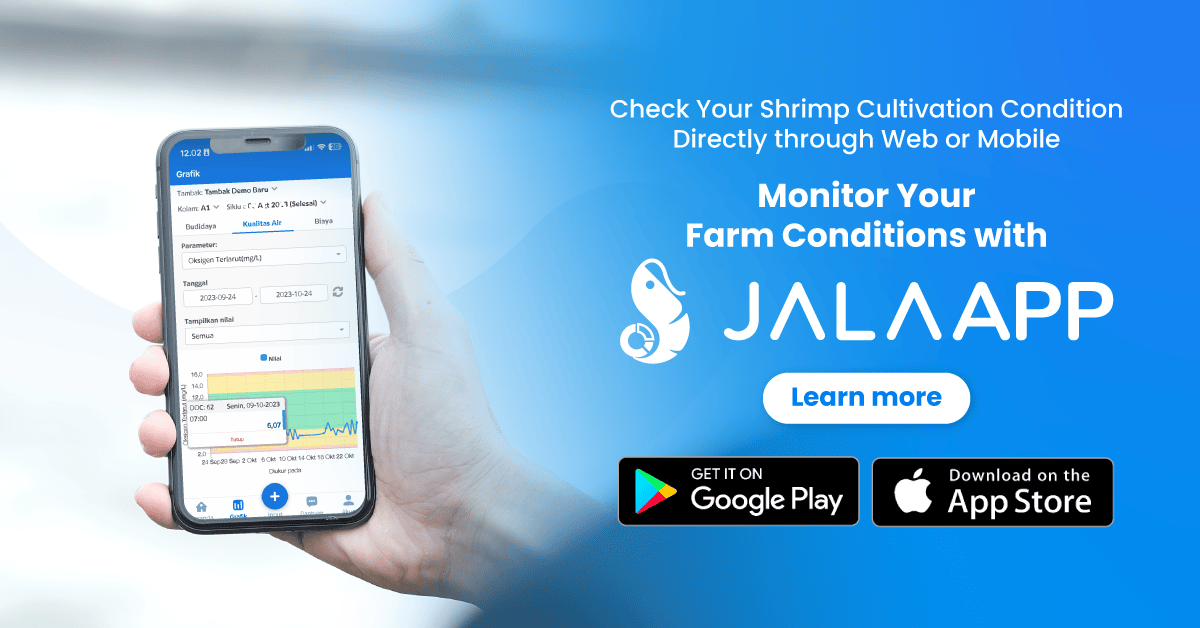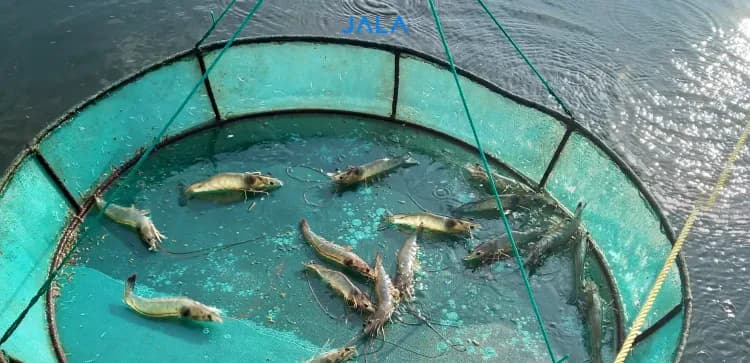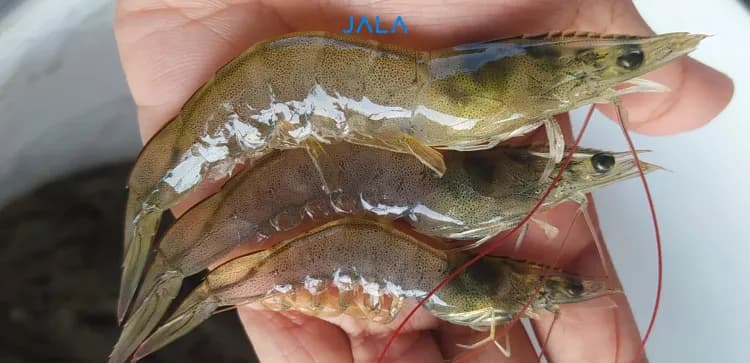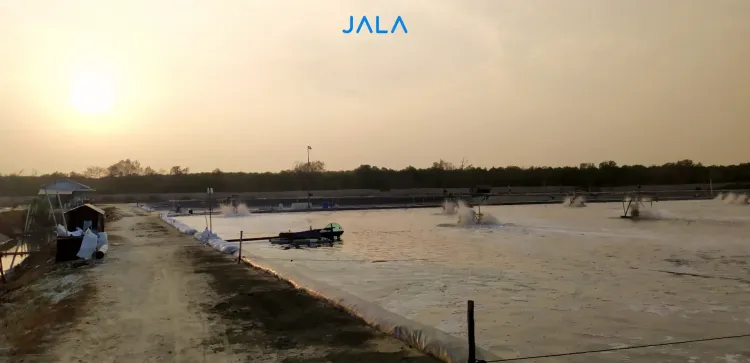
Understanding the condition of shrimp organs when infected by complex diseases
When shrimps are infected by AHPND, the condition of the hepatopancreas organ can deteriorate. This disease itself is a complex disease that frequently affects cultivated shrimp. Before you prevent it, you should first understand the hepatopancreas conditions and the phases of AHPND disease.
Shrimp Digestive Tract
The digestive tract plays an important role in many animals, particularly crustaceans. This tract performs nutritional and other functions. The digestive tract of decapods is usually long, so it is divided into three main parts, namely the Foregut (FG), Midgut (MG) or hepatopancreas, and Hindgut (HG) (Figure 1).
The hepatopancreas is the primary organ of decapods and is involved in several metabolic processes. It absorbs nutrients from digested food, produces mineral reserves and organic substances, metabolizes lipids and carbohydrates, and participates in the distribution of reserves stored during the intermoult cycle (fourth cycle in shrimp shell turnover) and organic compound catabolism. It also plays an important role in regulating the innate immunity system.
In most decapods, the hepatopancreas is a pair of glands located in the ventral section of the cephalothorax, occupying most of the cephalothorax area and extending to the right and left sides of the stomach in most decapods. This organ also serves as the habitat for many bacteria that affect shrimp physiological function and growth, including Acute Hepatopancreatic Necrosis Disease (AHPND).
Figure 1. Shrimp Digestive Tract Mapping
Acute Hepatopancreatic Necrosis (AHPND)
Acute Hepatopancreatic Necrosis Disease (AHPND), also known as Early Mortality Syndrome (EMS), is a bacteria-caused disease in shrimps. AHPND affects various shrimp species and is caused by certain bacterial strains.
In general, shrimps at the early stages of their life cycle are more vulnerable to AHPND infection. AHPND is distinguished by severe atrophy of the shrimp hepatopancreas, as well as histopathological changes that are peculiar to the acute stage of the disease. Shrimps suffering from this disease typically exhibit symptoms such as weakness, loss of appetite (anorexia), slow growth, an empty digestive tract, and a pale to white hepatopancreas (Figure 2). The phase is divided into three phases, namely initial, acute, and terminal phase.
Initial Phase
The hepatopancreas begins to show signs of damage. The shrimp’s intestines are partially or even completely empty. Furthermore, the gastrointestinal tract and hepatopancreatic changes were better visualized by dissecting and removing the epithelial membrane (Figure 3b).
Acute Phase
Shrimps with AHPND showed anorexia symptoms, weakness, and an empty digestive tract, as well as a lack of tissue pigmentation (Figure 3c). The hepatopancreas became atrophic and turned white (Figure 3d). During the first hour of infection, hepatopancreas tissue turns fragile and watery. However, as the disease worsens, the tissue’s firmness becomes increasingly difficult to break.
Terminal Phase
Shrimps in the terminal phase of AHPND, like those in the acute phase, suffer from anorexia, weakness, and have an empty digestive tract. The chromatophores were significantly expanded, whilst the hepatopancreas atrophied and turned whitish in color (Figure 3e).
Figure 2. Shrimp Digestive Tract Changes. Healthy shrimp (left) and AHPND-infected shrimp (right).
Figure 3. Macroscopic Observation of L. vannamei Digestive Tract with Acute Hepatopancreatic Necrosis Disease (AHPND). (a) Healthy shrimp; (b) initial phase; (c,d) acute phase; (e) terminal phase. The yellow arrow indicates the hepatopancreas damage.
Record Disease Data in JALA App
If your shrimp shows symptoms of AHPND disease, you should immediately bring the sample for laboratory testing. After getting the results, record them on JALA App, a shrimp farm management app from JALA, which is #HeretoHelp your cultivation. Disease data will provide insight on the cycle and serve as a material evaluation to determine the appropriate treatment.
Access JALA App at app.jala.tech or download the app at Google Play Store or App Store.
REFERENCES
Ceccaldi, H.J. 1989. Anatomy and physiology of digestive tract of crustaceans decapods reared in aquaculture. Actes de Colloque. 9: 243-259.
Garibay-Valdez, E., F. Cicala, M. Maritnez-Porchas, R. Gómez-Reyes, F. Vargas-Albores, T. Gollas-Galván, L.R. Martínez-Córdova and K. Calderón. 2021. Longitudinal variations in the gastrointestinal microbiome of the white shrimp, Litopenaeus vannamei. PeerJ. 9: 1-26.
Guillaume, J., S. Kaushik, P. Bergot and R. Metailler. 2001. Nutrition and Feeding of Fish and Crustaceans. Praxis Publishing. Chichester. 397 pp.
Holt, C.C., D. Bass, G.D. Stentifor and M. van der Giezen. 2021. Understanding the role of the shrimp gut microbiome in health and disease. Journal of Invertebrate Pathology. 186: 107387.
https://thefishsite.com/articles/expert-insights-into-ems-in-shrimp
Kibenge, F.S.B., B. Baldisserotto and R.S. Chong. 2020. Aquaculture Pharmacology. Elsevier. Amsterdam. 403 pp.
Kumar, V., S. Roy, B.K. Behera, P. Bossier and B.K. Das. 2021. Acute hepatopancreatic necrosis disease (ahpnd): virulence, pathogenesis and mitigation strategies in shrimp aquaculture. Toxins.13(8): 524.
López-Cervantes, G., P. Álvarez-Ruiz, S. Luna-Suárez, A. Luna-González, H.M. Esparza-Leal, C. Castro-Martínez, C. Gámez-Jiménez and J. Soto-Alcalá. 2021. Temperature and salinity modulate virulence and PirA gene expression of Vibrio parahaemolyticus, the causative agent of AHPND. Aquaculture International. 29:743–756
Silveira, A.S., G.M. Matos, M. Falchetti, F.S. Riberiro, A. Bressan, E. Bachere, L.M. Perazzolo and R.D. Rosa. 2018. An immune-related gene expression atlas of the shrimp digestive system in response to two major pathogens brings insights into the involvement of hemocytes in gut immunity. Developmental & Comparative Immunology. 79: 44-50.





